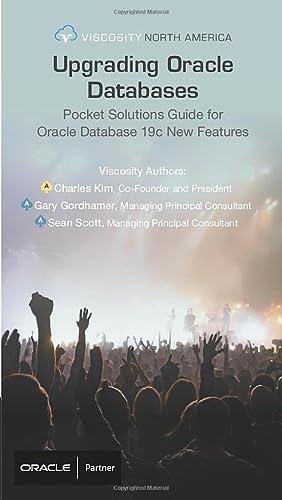Question
Create a table with two columns. Name the table First Initial _ Last Name (e.g. John Dow will create table j_dow). You have to audit
Create a table with two columns. Name the table First Initial _ Last Name (e.g. John Dow will create table j_dow). You have to audit all DML statements on your table. To do this you write two triggers:
1. To log any DML statements that users might run on this table. The results must be stored in the First Initial _ Last Name _ Log table (e.g. John Dow will create table j_dow_log).
The table should have unique event ID, values for both the Oracle and the system user who ran the query, the time it was executed and the type of DML query user ran.
2. To capture any data that was changed in the table. The results must be stored in the First Initial _ Last Name _ History table (e.g. John Dow will create table j_dow_history).
The table should reference the event ID from the log table, and store both old and new values for both columns.
What I need:
Code to create all three tables, constraints, insert statements.
Code for the first trigger
Test cases and expected results for the first trigger
Code for the second trigger
Test cases and expected results for the first trigger
Step by Step Solution
There are 3 Steps involved in it
Step: 1

Get Instant Access to Expert-Tailored Solutions
See step-by-step solutions with expert insights and AI powered tools for academic success
Step: 2

Step: 3

Ace Your Homework with AI
Get the answers you need in no time with our AI-driven, step-by-step assistance
Get Started


